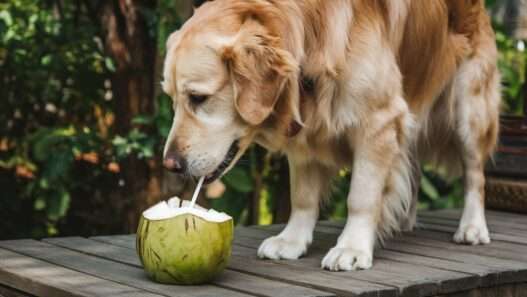Yes, dogs can eat dragon fruit in moderation. It’s not toxic to them and can be a healthy treat due to its vitamins and antioxidants. Just be sure to remove the seeds and peel, as these parts can be tough for dogs to digest. As with any new food, introduce it gradually and keep an eye out for any digestive issues.
What about dragon fruit skin for dogs?
The skin of dragon fruit is tough and not very digestible for dogs. It could potentially cause gastrointestinal issues or be a choking hazard. It’s best to avoid giving them the skin and only offer the flesh of the fruit, cut into small, manageable pieces.
Can dogs eat yellow dragon fruit?
Yes, dogs can eat yellow dragon fruit, also known as pitaya. It has similar properties to the red or pink variety and is safe for dogs in moderation. Just like with other types of dragon fruit, make sure to remove the skin and any seeds before giving it to your dog. The flesh should be cut into small pieces to prevent choking.
Can my dog eat dragon fruit?
Yes, your dog can eat dragon fruit in moderation. It’s a good source of vitamins and antioxidants. Just remember to:
1. Remove the skin and seeds: These parts can be hard for dogs to digest and might cause issues.
2. Cut the flesh into small pieces: This helps prevent choking.
3. Introduce it slowly: As with any new food, start with a small amount and watch for any adverse reactions.
If you notice any signs of digestive upset, discontinue the fruit and consult your vet.
Can dogs eat dragon fruit seeds?
1. Digestive Issues:
Dragon fruit seeds can be quite hard and may be difficult for dogs to digest. If swallowed, they might not break down easily in the digestive tract, which could lead to discomfort, bloating, or even blockages.
2. Choking Hazard:
The seeds could pose a choking risk, especially if they are large or if your dog tries to eat them quickly. Small dogs and puppies are particularly at risk of choking on hard objects.
3. Gastrointestinal Problems:
If a dog does manage to ingest seeds, they could cause gastrointestinal issues such as vomiting, diarrhea, or constipation. This is because seeds can be irritating to the digestive system or create blockages if they are not digested properly.
4. Nutritional Value:
While dragon fruit seeds contain some nutrients, such as fiber and omega fatty acids, these benefits are not worth the risk of potential digestive issues or other complications in dogs. The flesh of the fruit provides plenty of nutrients without the risk associated with seeds.
5. Safe Consumption:
To safely offer dragon fruit to your dog, always remove the seeds and cut the flesh into small, manageable pieces. This ensures that the treat is both safe and enjoyable for your dog.
The final word on dragon fruit:
In summary, dragon fruit can be a healthy and tasty treat for your dog when given in moderation. Here’s the final word on how to safely incorporate it into your dog’s diet:
1. Remove Seeds: Always remove the seeds before offering dragon fruit to your dog. They can be hard to digest and may pose a choking hazard.
2. Avoid Skin: Do not give your dog the skin of the fruit. It’s tough and difficult for dogs to digest.
3. Serve in Moderation: Offer the flesh of the fruit in small, manageable pieces. Too much fruit can lead to digestive upset.
4. Watch for Reactions: Introduce dragon fruit gradually and monitor your dog for any adverse reactions. If you notice any digestive issues or discomfort, discontinue the fruit and consult your vet.
By following these guidelines, you can safely enjoy sharing dragon fruit with your furry friend!






























Your content is a go-to source for me when I need information. Great work, as always!
I\’m glad you enjoyed it! Your kind words inspire me to keep creating informative content.
This post is a game-changer. I\’ve learned so much from it – thank you!
I love how your posts are always so well-structured and easy to follow. Keep it up!